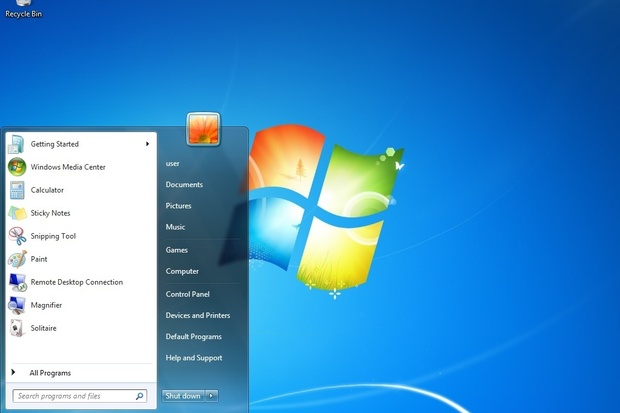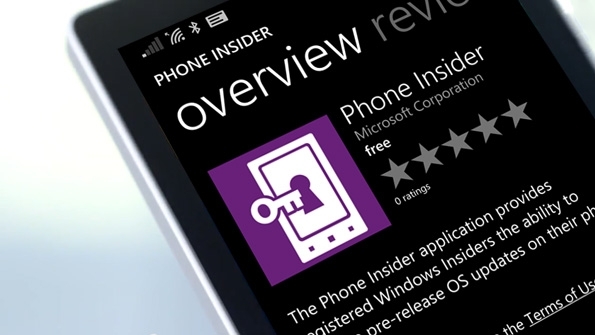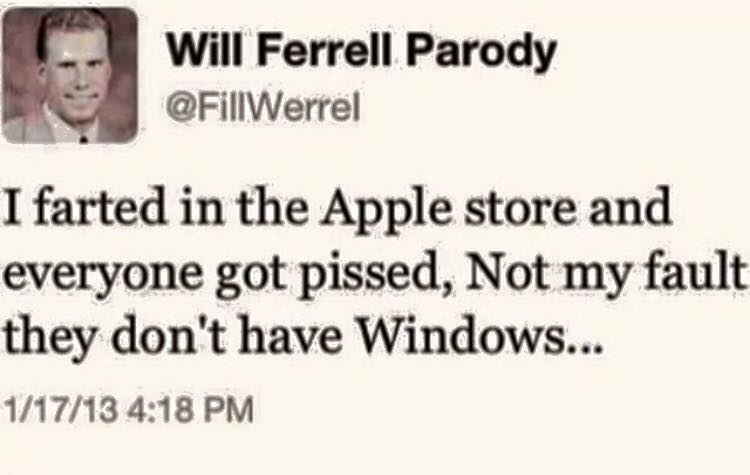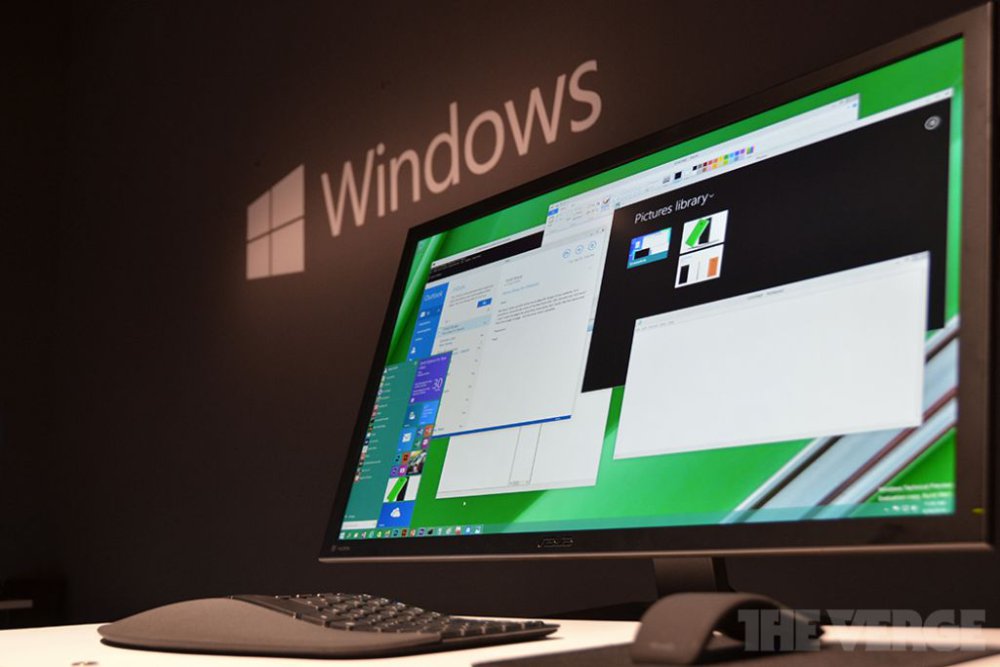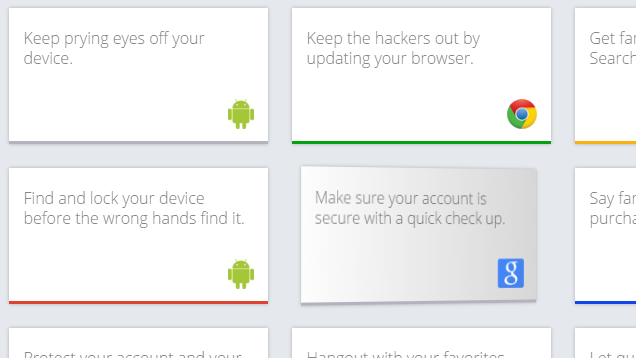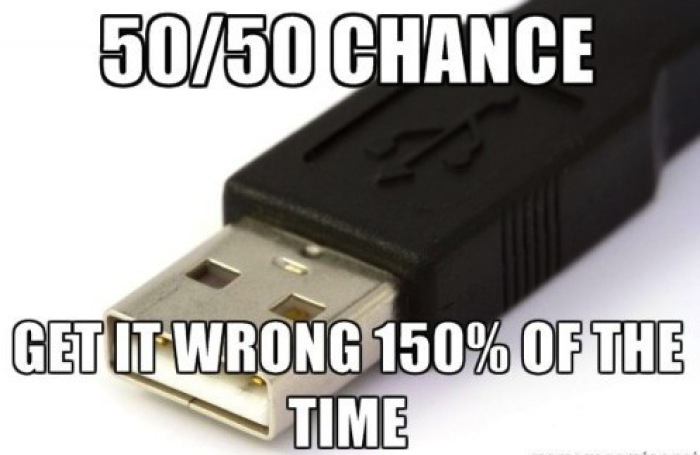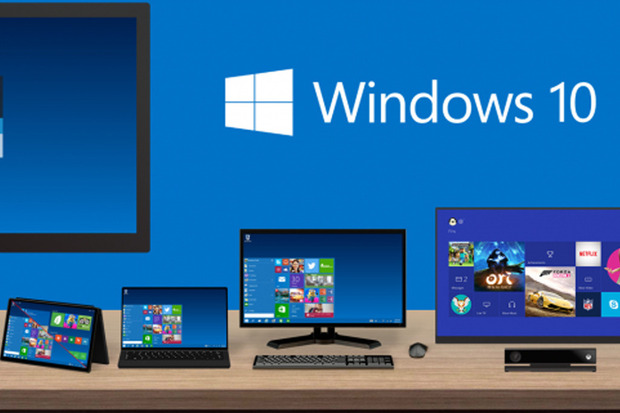-
Posts
7,278 -
Joined
-
Last visited
-
Days Won
2,416
Content Type
Forums
Blogs
Events
Resources
Downloads
Gallery
Store
Everything posted by allheart55 Cindy E
-
On January 13, Microsoft's mainstream support for Windows 7 Service Pack (SP) 1 ends. Nobody panic. This does not mean Microsoft is going to stop issuing security fixes for Windows 7 SP1 tomorrow. Or anytime soon, for that matter, unlike some of its competitors (cough, Google, cough). "Mainstream support" is the period during which Microsoft provides for free security and non-security updates and telephone support for its products. "Extended support" -- the period during which Microsoft continues to provide for free security updates for products -- doesn't end until January 14, 2020 for Windows 7 SP1. Tomorrow's support milestone for Windows 7 SP1 does not have implications for downgrade rights. Users will still able to buy a new PC with an OEM license for a business edition of Windows and then install an earlier version. PCs with Windows 8.1 Pro can be downgraded to Windows 7 Professional or Windows Vista Business. Microsoft volume licensees don't have to worry about their OEM's downgrade rights provisions; they have the right to downgrade to any prior version of Windows. The January 13 deadline also has nothing to do with the end of sales cut-off date for PCs running Windows 7 Pro. Microsoft still has not provided a date as to when Windows 7 Pro will no longer be shipped to retailers or OEMs. Company officials have said they will provide one year of notice prior to that end-of-sale date. As of October 31, 2014, Microsoft stopped providing its PC partners and systems builders with copies of Windows 7 Home Basic, Home Premium and/or Ultimate (not Professional) to preinstall on new PCs. But OEMs have been allowed to continue to sell their stock of PCs running these versions of Windows 7, though not to replenish their supplies. Windows 7 still has more than 50 percent of the worldwide operating system market share, according to Net Applications.
-
Windows 7 will reach the midpoint of its support lifetime this week when it shifts from what Microsoft calls "mainstream" to "extended" support. The world's most popular personal computer operating system exits mainstream support on Tuesday, Jan. 13. After that, although Microsoft will continue to issue security updates to all users for another five years, it will not add new features to Windows 7, and any non-security fixes -- such as reliability and stability updates -- will be issued only to organizations that have signed support contracts. Next week thus marks the halfway point of Windows 7's decade-long support stretch, which ends Jan. 14, 2020. Windows 7 will continue to run, of course: The migration into extended support does not make it inoperable. Windows 7's user share is at a near-record high. In December, it accounted for 56% of all personal computer operating systems, and 62% of all versions of Windows. Since the debut of Windows 8, its purported successor, Windows 7 has increased its user share by about 12 percentage points, representing a gain of 26%. That increasing share may not bother Microsoft, but it should businesses that decommissioned Windows XP PCs and replaced them with Windows 7 systems, ignoring Windows 8. With Windows 7's life half over, those enterprises now have five years to complete a transition to another OS, probably Windows 10, the upgrade Microsoft will release this fall. Five months ago, in fact, Gartner began urging corporations to start their post-Windows 7 planning if they wanted to prevent a recurrence of the end of Windows XP's support, when many had to either hustle to make the support deadline, or worse, continued running the aged OS after patching ended. "While this feels like it's a long way off, organizations must start planning now," said Gartner analysts Michael Silver and Stephen Kleynhans in August. And the failure of Windows 8 to win enterprise hearts and minds has created one oddity: Even though Windows 7 has made middle age, Microsoft continues to let OEMs (original equipment manufacturers) sell PCs running the business edition. Microsoft has yet to name an end date for OEM sales of machines powered by Windows 7 Professional. But because it has promised a 12-month notice, those PCs can still be sold at least until early January 2016, when the OS has but four years of life left.
-
Microsoft has criticized Google for deliberately publishing details of a vulnerability in Windows 8.1 two days before a fix was due to be released. Google published details of the bug as part of its Project Zero initiative, which it claims gives companies enough advanced warning — 90 days exactly — to fix vulnerabilities before they go live. Microsoft, however, says it told Google that it was planning to introduce a fix using its "well known and coordinated Patch Tuesday" update, and that the search giant's behavior endangers customers. "Although following through keeps to Google’s announced timeline for disclosure, the decision feels less like principles and more like a "gotcha," with customers the ones who may suffer as a result," writes Chris Betz, senior director of Microsoft’s Security Response Center. "What’s right for Google is not always right for customers. We urge Google to make protection of customers our collective primary goal." Google believes time limits encourage action — Microsoft says it just makes complex situations more difficult to deal with. This is the second incident of its kind to occur in only the last few weeks. On December 29th Google revealed a similar vulnerability in Windows 8.1 before Microsoft had readied a fix, with the search giant saying at the time that it believed its 90-day time limits were fair. "On balance, Project Zero believes that disclosure deadlines are currently the optimal approach for user security," Google told Engadget. "It allows software vendors a fair and reasonable length of time to exercise their vulnerability management process, while also respecting the rights of users to learn and understand the risks they face." Following this latest release (revealed to Microsoft on October 13th 2014 and made public on January 11th 2015), it’s clear that Microsoft's and Google’s policies are at odds. "Those in favor of full, public disclosure believe that this method pushes software vendors to fix vulnerabilities more quickly and makes customers develop and take actions to protect themselves," writes Betz. "We disagree ... We believe those who fully disclose a vulnerability before a fix is broadly available are doing a disservice to millions of people and the systems they depend upon."
-
Microsoft has posted a new Phone Insider app to the Windows Phone Store, the latest sign yet that the Windows Technical Preview will soon be expanded beyond PCs and tablets to smart phones. While the app currently doesn't offer much in the way of functionality, the official description is clear enough. Happy days, folks. "The Phone Insider application provides registered Windows Insiders the ability to receive pre-release OS updates on their phone, directly from Microsoft," the app description notes. This is different from the Preview for Developers app, which lets Windows Phone users upgrade to the latest Windows Phone version—currently Windows Phone 8.1 Update 1—before it's released by wireless carriers. The key phrase there is "Windows Insiders": that's the name Microsoft gives to people who participate in the Windows Technical Preview for Windows 10. So this new Phone Insider app is clearly a version of the Preview for Developers app, but for Windows 10 builds: It will open up the virtual flood gates, so to speak, letting the Phone Update settings app find new Windows 10 builds as they're released. At the moment, however. it doesn't do much, unless of course you work at Microsoft: it lets you sign in with your Microsoft domain account to access current builds. Soon, he says, rubbing his hands together greedily. Soon.
-
I knew that! :D
-

USB Type-C is Major Improvement
allheart55 Cindy E replied to Rich-M's topic in Tech Help and Discussions
This will be a welcome relief! -
Awesome. Done!
-
New details have been revealed for Microsoft’s Windows 10 browser, codenamed Spartan. Sources familiar with Microsoft’s plans for its next operating system have told The Verge Spartan will include “features not found in rival browsers.” For instance, Spartan will support inking -- the ability for users to make notes on web pages with a stylus and share them with other users. The inking service will be powered by Microsoft’s OneDrive cloud storage, allowing users the ability to access, edit and share the web pages through any browser across multiple platforms. The new browser will also come with Cortana digital assistant integration. Cortana allows users to seek out information on hotel bookings, flight status, and tracking for packages through the browser’s address bar. Cortana is expected to replace Bing functionality integrated in Internet Explorer. Custom themes were originally expected to be included with Spartan. It appears that will not be the case at launch. However, it is possible custom themes may come in future updates. The Verge also reports images of the new browser were allegedly leaked by Chinese tech site Cnbeta, revealing a minimalist interface. Spartan’s browser tab functionality will be streamlined in an effort to clean up multiple browser tabs. Users will be able to group tabs to their preferences, such as personal and work tabs. Spartan is a single browser app intended to work across PCs, tablets and phones. It will also look and feel similar across all devices. It will be available on Microsoft’s Windows Store as a way for the company to simplify the update process for the browser. The desktop version of the app will be offered separately from mobile versions. Windows 10 will ship with Spartan, but Internet Explorer users won’t be abandoned. Microsoft is expected to include Internet Explorer in Windows 10 for compatibility. It has not been confirmed if Spartan will remain the browser’s name, as Microsoft typically employs codenames for its products in development. IGN will attend Microsoft's Windows 10 press event on January 21, which will include a presentation from Xbox Boss Phil Spencer. The event will serve as a showcase to the general consumer for Windows 10, which Microsoft revealed last year. Windows 10 is expected to release sometime in 2015.
-
-
Microsoft’s Surface tablet has inspired a few clones during its short history, but the latest rip off comes from three ex-Google engineers. Jeremy Zhou, David Ko, and Ben Luk used to work on products like Google Maps and search at the web giant, and formed Jide Technology in 2014 to create a combined tablet and laptop. The result is an "ultra tablet" with a magnetically attached keyboard and a kickstand that all looks identical to Microsoft’s Surface tablet. Jide Technology hasn’t just stopped at the hardware, though. Even the "Remix OS" rips off Microsoft’s work in various ways, including a mail client that’s a straight copy. So what’s the justification for such a blatant rip? "We can't stand the drawbacks of the tablets and laptops on the market today and we wanted to do something about it," reads a statement on the company’s site. Jide’s creation is an 11.6-inch tablet that runs a modified version of Android that takes a lot of design cues from Lollipop and Microsoft’s "Metro" design language. Specifications include a 1920 x 1080 display, 2GB of RAM, and an Nvidia Tegra 4+1 processor. Android Central got a quick look at the tablet at CES this week, and notes that it also includes a 4-pin charging connector at the side and support for multiple windows with Android apps. Jide plans to launch the Remix tablet in the US this year priced at $349 for the basic 16GB model, but we have a feeling that Microsoft might have something to say about it.
-
Microsoft is preparing to unveil a new browser in Windows 10, codenamed Spartan, and leaked images are providing an early glimpse at the Internet Explorer successor. Chinese site Cnbeta has published screenshots showing the simple interface of Spartan and the Cortana digital assistant integration. The Verge revealed yesterday that Spartan will include digital inking support to share and annotate web pages, and deep Cortana integration in the address bar and throughout the browser. Cnbeta’s screenshots also reveal Microsoft’s upcoming Windows 10 user interface. Sources familiar with Microsoft’s Windows plans tell The Verge that the company is planning to build light and dark themes with color accents for Windows 10. The look and feel will be similar to that of the existing user interface for Windows Phone, and these leaked screenshots provide an early look at an internal Microsoft concept and the aim for the final UI. They do not represent the final interface as Microsoft will be tweaking it a number of times over the coming months. Some of these user interface changes have started appearing in recent builds of Windows 10, with the new dark taskbar surfacing in a leaked version last month. Microsoft is also tweaking its built-in apps to match the new color schemes, with a new Xbox app that hints at what the company is planning for the final version of Windows 10. Microsoft is expected to unveil these user interface changes and a mobile version of Windows 10 for tablets and phones at a press event on January 21st. The software maker will also likely detail its plans for the Spartan browser across PCs, phones, and tablets.
-
Google has offered tips for how to use its service for a while. A newly-added section now provides online security tips. This is useful if you want to check out your own account, or teach someone else the basics. The site features simple, card-style tips for how to keep your account safe and be cautious online. It introduces newcomers to features like Android Device Manager, or basic security info like a PIN. For many of us, this isn't all new info, though you should still check it out on the off chance you didn't know about something. More importantly, if a family member or friend uses Google but doesn't have good security habits, you can send this page along to brief them on a variety of security topics at once.
-
-
Microsoft is planning to radically overhaul its web browser in Windows 10. Sources familiar with the company’s Windows plans tell The Verge that the new browser, codenamed Spartan, will include a host of new features not found in rival browsers. Chief among the plans for Spartan is new inking support that allows Windows 10 users to annotate a web page with a stylus and send the notes and annotations to a friend or colleague. The web note service will be powered by Microsoft’s OneDrive cloud storage, meaning notes will be stored on a copy of a web page that can be accessed by any browser across multiple platforms. As annotations are shared, multiple users can doodle on a web page and share edits and annotations between groups. A second major feature for Spartan will be the integration of Microsoft’s Cortana digital assistant. Microsoft is planning to use Cortana to surface information on flights, hotel bookings, package tracking, and other data within the traditional address bar. If you use Cortana to track a particular flight and start to search for "American Airlines" in the browser address bar, it will automatically display tracked flights and allow Spartan users to view the status of the flight directly. It’s a subtle addition, but you’ll also be able to access Cortana search directly from the new tab interface in Spartan. Cortana integration in the Spartan browser is planned to replace every instance of the existing Bing methods in Internet Explorer. Other features include a new way to group tabs together to declutter the occasionally messy interface of multiple browser tabs. Spartan will allow users to group tabs however they want, making it easier, for example, to split up personal tabs from work ones. Microsoft also originally planned to allow Spartan to support custom themes, but we understand the company has dropped this for the final new browser in Windows 10. Such support may arrive in future updates. Spartan is designed to be a single browser across PCs, tablets, and phones. We’re told that Microsoft will make Spartan a Windows Store app, enabling the company to quickly and easily update the browser in future. ZDNet previously reported that Microsoft will continue to include Internet Explorer in Windows 10, and we understand this will be primarily for legacy compatibility reasons. Spartan is the main browser in Windows 10, and most users will be accessing the web using it. While Spartan will be a Windows Store app, we understand Microsoft isn’t planning to make it a universal app initially. One version of Spartan will be available in the Store as a desktop app, and another as a modern app for tablets and phones. Both will be updated regularly with identical features. Microsoft is planning to keep the look and feel of Spartan very similar across phones, tablets, and PCs. The desktop version looks like a simplified version of Chrome, with a tabbed interface above the address bar, alongside options to go back, forward, and refresh a page. It’s all designed to look lightweight, without the bloat typically associated with older versions of Internet Explorer. While the Spartan name is a codename, it’s not clear if Microsoft plans to continue the Internet Explorer branding with its new browser. That naming and other features of Spartan could play a part in Microsoft’s Windows 10 event on January 21st. Microsoft is planning to detail the consumer features of Windows 10 at its press event later this month, including its phone and tablet features. We reached out to Microsoft for comment on its Windows 10 browser plans, but a spokesperson says the company has "nothing to share."
-

It Is Cold Outside!
allheart55 Cindy E replied to allheart55 Cindy E's topic in Tech Help and Discussions
I can't believe we had a 12 pack of soda left out on the patio! :) -
My back patio is filled with root beer cans that burst all over. Some of them even flew several feet. Who leaves soda outside in the winter? :D :help:
-
-
Microsoft has confirmed that its next Windows 10 Technical Preview will be available to download as an ISO. Current releases have been seeded through Windows Update to those registered for the Windows Insiders program only, meaning they cannot perform clean installs on freshly-wiped systems. Microsoft did eventually provide an ISO release for its most recent Windows 10 preview — build 9879 — but it came several weeks after the Windows Update rollout. But Gabriel Aul, head of the Windows Insider program, has confirmed that the next build will be available in ISO form from day one. That means users can download the ISO and either put it on a flash drive or burn it to a disk and perform a fresh Windows 10 install on a clean drive. Those who download the previews through Windows Update have the option to install them over their existing operating system as an upgrade only. Aul didn’t confirm when the next Windows 10 build will be available, but he did say we’ll know more on January 21 — the day of Microsoft’s next Windows 10 press conference, which is expected to see the release of the first “Consumer Preview.” In addition to Cortana integration, the Consumer Preview could include our very first look at Spartan, a brand new web browser Microsoft is said to be developing as a replacement to Internet Explorer – as well as a new Xbox app.
-
One of Microsoft's biggest decisions this year will be whom to charge for Windows 10, and the dollar figure on the price sticker. Hints of that decision could come as early as Jan. 21, when Microsoft executives will not only unveil the next iteration in Windows 10's string of previews, but also further explain Windows' part in the company's overall strategy. CEO Satya Nadella has alternately portrayed that strategy as "cloud-first, mobile first" and "productivity and platforms." Office for iPad: Word is a home run, Excel is a win, but PowerPoint disappoints. In December, Microsoft COO Kevin Turner said that the firm would reveal its Windows business model plans in early 2015. Details of that model have not been disclosed, but would certainly include how Microsoft figures to make money off Windows after it's begun giving away licenses to makers of phones, smaller-sized tablets and inexpensive personal computers. As part of an explanation of monetization -- which Turner acknowledged requires "creative ways" -- Microsoft might also use the January event to discuss Windows 10's upgrade pricing. Or not. Wes Miller, an analyst with Directions on Microsoft, was skeptical in a recent interview. "[upgrade pricing] isn't the most important thing right now," he said, pointing out that Microsoft typically discloses that information just a few months before shipping, or early-to-mid summer when it releases a new operating system in the fall. Make or break time for Microsoft Instead, Miller believed that Microsoft would discuss Windows in more general terms in January, perhaps focus on its creation, or as he put it, "Talk about how the sausage gets made." Still, Windows 10 will be "the real make-or-break" test for whether Microsoft can reinvigorate the consumer part of its PC customer base, Miller said. But he was painting in broader strokes, not focusing on upgrade pricing only. Jan Dawson, principal analyst at Jackdaw Research, saw it differently. Although he had no predictions for what Microsoft would reveal in two weeks, he has called the upgrade pricing question one of the most important facing the company this year. "The single greatest test may be whether Microsoft can successfully charge large amounts of money for a new operating system to consumers and still see significant uptake," said Dawson in a piece published last month on Tech.pinions (subscription required). There is increasing evidence that Microsoft believes it will not be able to pass Dawson's test with Windows 10, and so will, through necessity, choose a strategy very different from decades-long pricing practices. Strategy options First on the witness list is Microsoft's stunning decision earlier this year to give away Windows licenses to OEMs (original equipment manufacturers) building devices with screens 9-in. or smaller -- in other words, smartphones and larger tablets. That was quickly followed by a free or nearly-free (it depends on whom you ask) version of Windows for traditional PCs, dubbed "Windows 8.1 with Bing", that now powers a line of ultra-inexpensive notebooks. Those are best exemplified by HP's Stream, which compete on price with the many flavors of Chromebook, the Chrome OS-based laptops that put a fright into Redmond. While there's nothing to stop Microsoft from charging historical prices for Windows 10 upgrades -- roughly $100 for a consumer edition, $200 for one aimed at businesses -- in light of giving corporations like HP a free ride, the backlash would almost certainly be fast and furious. With Windows free elsewhere, even the aggressive discount prior to the release of Windows 8 three years ago, when Microsoft charged customers $40 per license, would come across as squeezing coin from the villagers while leaving the aristocracy untaxed. The last thing Microsoft needs is another "I-hate-Windows" groundswell, this one triggered by customer class warfare. Secondly, Turner made clear that everything is up for grabs. His words must be taken seriously, as Microsoft rarely if ever reveals anything it doesn't want to reveal. In early December, Turner said "We've got to monetize it differently," referring to Windows, and then stressed that the new business models would "allow us to monetize the lifetime of that customer through services and different add-ons (emphasis added)." If that doesn't sound like a freemium strategy, analogous to in-app purchases on a smartphone, we don't know what does. And finally, there's Windows 10 itself. When the company's top operating system executive Terry Myerson unveiled Windows 10 in September, he said, "We're not building an incremental product," to stress that 10 is a big break from the past. (Skipping "9" was another clue.) Although his assertion could reflect any number of things, including the merging code base of Windows, much about the new OS will be radically different than the Windows of the past. WIndows 10 will have a much faster update cadence -- which some believe will make it impossible for Microsoft to charge for updates, even major ones that previously would have been labeled "upgrades" -- and retain the moniker for many more years than the usual three. It's all about the price That last means Microsoft must get the pricing right at the start or face more backtracking, something it should be loath to do, what with the backpedaling from Windows 8 in the last two years. Altogether, the evidence points to a rethinking of Windows 10, including its pricing. But what are Microsoft's options? Dawson laid out three. Option A: Free upgrade from Windows 8.1 seems like a lock. "This would be mostly about pacifying those users," said Dawson, referring to the complaints lodged about Windows 8 and even Windows 8.1, like the lack of a Start menu, and a reluctance to try "Modern," née "Metro," apps. Option B: Free upgrade from older versions of Windows may be a stretch, but a free deal for Windows 7 would almost instantly boost the user share of Windows 10, where customers could be monetized through app and service purchases. Option C: Free upgrades to all consumers, and possibly free licenses to all consumer PC OEMs, too, while continuing to charge for enterprise-grade licenses, would be the most radical move. The options could be combined, so that Microsoft, for example, selects B but also applies C, giving a free Windows 7-to-Windows 10 upgrade to consumers only. Not surprisingly, these options come with trade-offs and long-term implications. Under any of its free upgrade options, Microsoft will surrender varying amounts of revenue, with the smallest hit from A, much more from B and the largest, by far, from C. With between hundreds of millions and billions of dollars at stake, revenue drop-off certainly has to have been at the fore of the firm's deliberations. Turner denied that Windows would be a "loss leader," implying that Microsoft would not make the OS free across the board. Even under the biggest break with the past, Option C, Microsoft would still charge some customers -- those in the enterprise -- for upgrades or new licenses. That leaves the company lots of maneuvering room. Windows class warfare? Creating customer classes -- consumer on one hand, commercial on the other -- by giving the former free upgrades but making the latter continue to pay, also could be risky: As with the OEM-customer pricing disparity, enterprises might balk, especially if they're asked to pay even more for their Software Assurance annuity plans, as some experts believe will happen. On Microsoft's side, however, is the fact that businesses have little alternative to Windows for their PCs, and although they might grumble at paying for upgrades when consumers get them for free, they will have to bite the bullet and pony up. If Microsoft does choose Option C, or one of the others but limit the free deal to consumers, it would probably proffer a less-capable version of Windows 10 as the upgrade, one that omitted domain joining and other enterprise-grade features found only in Windows' Enterprise, Pro and Professional editions. That would let it continue to charge Windows 10 customers who need those business tools, much like it now does for Office on the iPad. Also on the decision scale are Microsoft's relationships with its OEMs. Traditionally, computer makers have used each new edition of Windows to shill systems, knowing that most customers do not upgrade, but instead buy a new PC after Microsoft rolls out a new OS. By giving away upgrades to Windows 10, especially if the eligible include Windows 7 users, Microsoft would essentially dump that sales tool. OEMs would rightfully see any broad-based free upgrade as a threat, something doubly difficult for them to swallow during the current tough times for personal computers. Free upgrades would also set a precedent, Dawson observed, that might be difficult to later reverse. That alone makes Microsoft's Windows 10 decision important: It could be stuck with what it chooses in 2015. In some ways, however, that hesitation to break with precedent would be minimized. Most analysts expect that Windows 10 will be the last major upgrade, if not for forever, then for many more years than the usual three-year cycle, with constant updates replacing occasional upgrades. Perhaps Microsoft believes the benefit of a widespread free upgrade -- anything more than Option A -- outweighs the revenue and OEM relationship problems. If so, one reason has to be its app issue. Before the launch of Windows 8, then-CEO Steve Ballmer boasted that Modern app developers would have hundreds of millions of customers, basing that on the number of PCs sold annually, plus anticipated upgraders. "It's going to create a heck of a lot of opportunity for folks in this room to make millions," Ballmer claimed in October 2012. That opportunity did not materialize. But a free Windows 7-to-Windows 10 upgrade has the potential to add millions more to the pool of app purchasers, and millions of buyers of what Turner called "services and different add-ons." Microsoft may not strike out with just one whiff at the app plate, but it's hard to see how it could convince developers that Modern is worth their time if it swung and missed again with Windows 10. This might be its last chance. "In some ways, Windows 10 may be seen as symbolic of all the challenges facing Microsoft," said Dawson. Exactly. This story, "Microsoft's big decision: Who gets a free upgrade to Windows 10?" was originally published by Computerworld.
-
-
Yes, absolutely. The only portion of Windows Live that I use is the Movie Maker.
-
I still use it, N3. It's such a small, lightweight program, I think it's definitely worth it.

